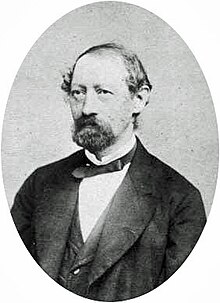Tassilo von Heydebrand und der Lasa
| Tassilo von Heydebrand und der Lasa | |
|---|---|

Tassilo von Heydebrand und der Lasa
|
|
| Full name | Tassilo, Baron von Heydebrand und der Lasa |
| Country |
|
| Born |
17 October 1818 Berlin, Germany |
| Died | 27 July 1899 (aged 80) Storchnest bei Lissa, Germany |
Tassilo, Baron von Heydebrand und der Lasa (known in English as "Baron von der Lasa", 17 October 1818, Berlin – 27 July 1899, Storchnest near Lissa, Greater Poland, then German Empire) was an important German chess master, chess historian and theoretician of the nineteenth century, a member of the Berlin Chess Club and a founder of the Berlin Chess School (the Berlin Pleiades).
His name is usually abbreviated as "von der Lasa", as this is how he signed his letters. However both contemporary and more recent writers have used other abbreviations, such as "von Heydebrandt" (which is a misspelling) and "Der Lasa". The Prussian King (later Emperor) William I made a joke out of the confusion by saying, "Good morning, dear Heydebrand. How is von der Lasa doing?"
Von der Lasa was born 17 October 1818 in Berlin. He studied law in Bonn and Berlin. From 1845 he was a diplomat in the service of Prussia. His career took him to , Copenhagen, and Rio de Janeiro, among other places. He retired from the diplomatic service in 1864, and thereafter devoted himself to the world of chess.
He played several matches and defeated the strongest masters in the period 1843–1853. He won against Henry Thomas Buckle 2-1 (1843), Adolf Anderssen 4-2 (1845), Johann Löwenthal 6-1 (1846), John William Schulten 4-1 (1850), Anderssen 10-5 (1851), and Howard Staunton 7-6 (1853).
To the modern chess world he is known above all as the main author of the Handbuch des Schachspiels (first published in 1843). His friend Paul Rudolf von Bilguer, responsible for the original plan, had died in 1840, with the work still in the early stages. Von der Lasa took over, and, in a noble gesture of friendship, put his friend's name as author. In later editions of the Handbuch, in German commonly called der Bilguer, von der Lasa was named as co-author.
...
Wikipedia
